There’s a lot to think about when adding plants and shrubs to your garden. You have to think about sun exposure, planting space, soil pH, and a million other factors before you even head over to the garden center.
And if you have a four-footed family member, you’ll have even more things to think about. You don’t want to add any toxic plants to your backyard, nor do you want to add any plants that are too fragile to withstand the wear and tear your dog dishes out.
We’ll try to help you fill out your garden in a dog-friendly way by sharing 11 shrubs and plants that won’t represent a serious danger to your pet and are hardy enough to coexist with canines.
Our Favorite Dog-Friendly Shrubs For Your Yard
Each of the 11 shrubs listed below is a great choice for dog owners to plant in their garden or backyard.
Each is listed as non-toxic to dogs by the ASPCA, so they shouldn’t cause serious illness if your dog decides to nibble on the leaves or flowers.
Just be aware that any type of plant material can upset your dog’s stomach, and some dogs are more sensitive to plant material than others.
So, if you ever see your dog munching on these plants, keep a good eye on her and make sure you contact your vet if she begins exhibiting any troubling symptoms.
1. Tropical Hibiscus
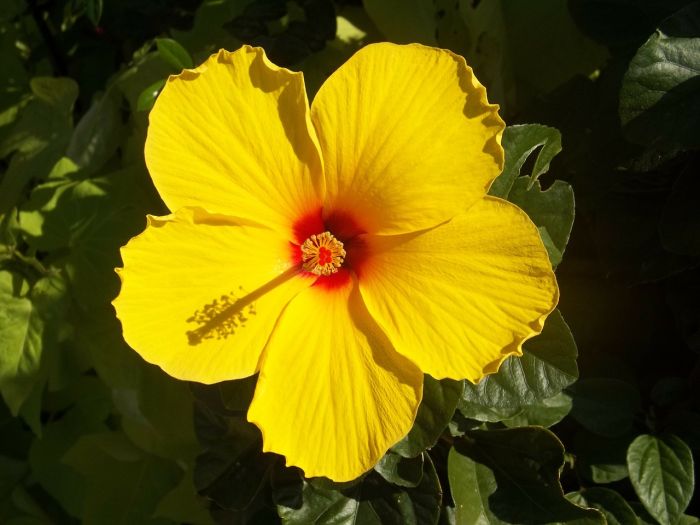
There are several hundred species of plants in the genus Hibiscus, but most of the ones you’ll find in garden centers are cultivars of the Chinese hibiscus (Hibiscus rosa-sinensis).
Hibiscus are big shrubs that sometimes reach tree-like proportions, so be sure you have plenty of space for these gorgeous plants.
Hibiscus plants shouldn’t represent any serious threat to your dog; the flowers of many varieties are even edible.
2. Crepe Myrtle
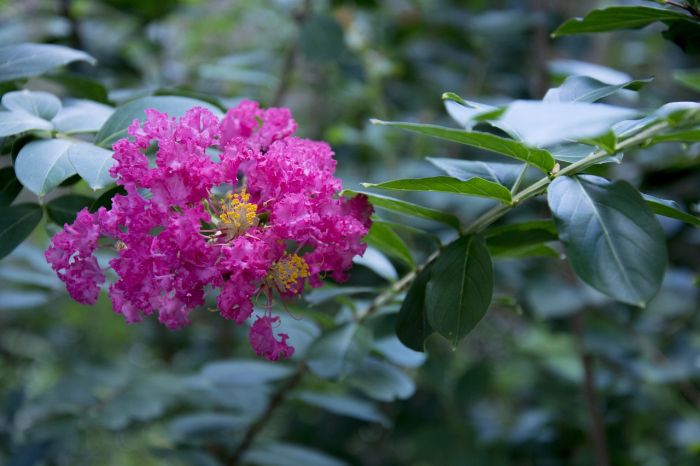
Crepe myrtles are probably better described as trees than shrubs, but they’re easy to tame with regular pruning. This should help keep them pretty small if you like.
Regardless of the way you prune them or how big you let them get, crepe myrtles are a great choice for pet-friendly yards. Crepe myrtles are generally very robust and hardy, and they are completely safe for your dog.
3. Hawthorn
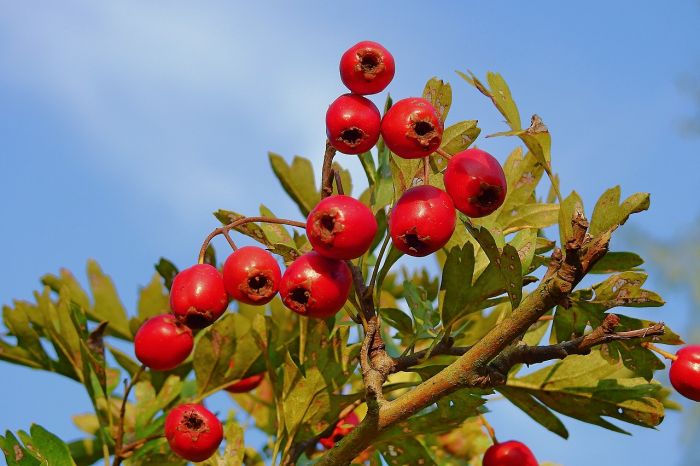
There are a variety of hawthorns in the genus Crataegus that make excellent backyard shrubs. Many are nearly tree-sized, but there are several varieties available that work well for hedges. Most hawthorns produce edible fruit, and the ASPCA lists them as non-toxic.
Note that some hawthorns produce thorns that could injure your pet, so avoid those in favor of thornless varieties.
4. Magnolia Bush
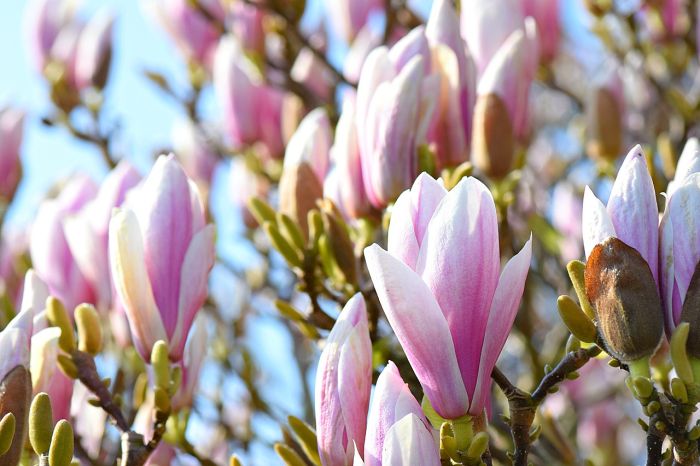
Most people picture large, stately trees when they hear the word magnolia, but there are a number of multi-trunked, shrub-sized magnolias available from growers and garden stores.
These often make great additions to backyards with dogs, as they’re both robust and non-toxic.
Magnolias produce glorious flowers, but they also produce quite a bit of leaf litter. So, be sure you’re willing to bust out your rake every once in a while before planting these attractive shrubs.
5. Figleaf Palm
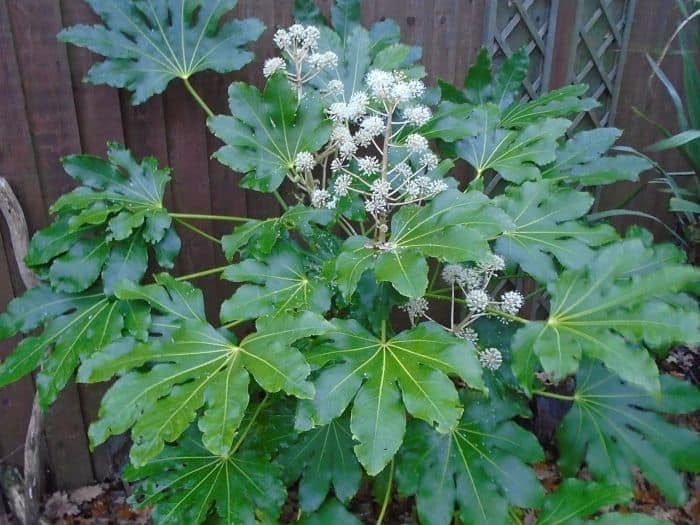
Also known as the Japanese aralia or false castor oil plant, the figleaf palm is an interesting-looking dog-friendly plant for yards. It can reach up to 9 feet in height, but most are smaller. They all have large, glossy leaves and attractive flower clusters (technically called umbrels).
Figleaf palms offer particular value as one of the relatively few shade-tolerant, pet-friendly shrubs around.
6. Bamboo Palm
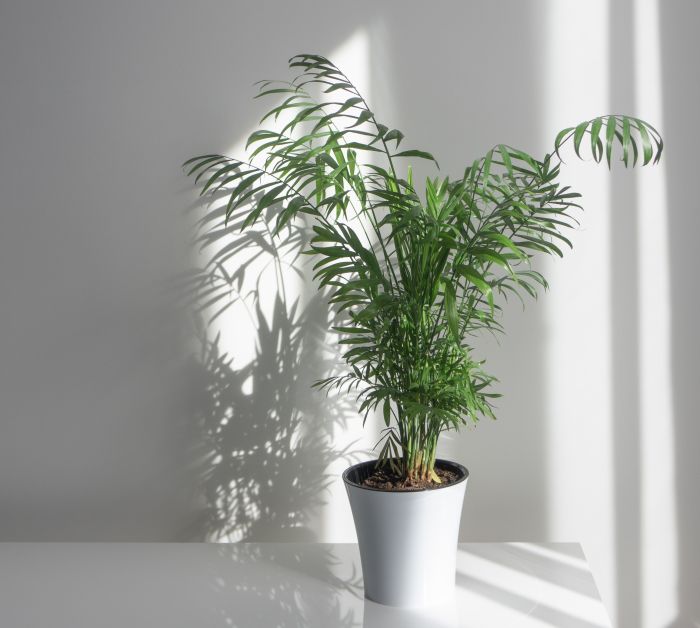
Bamboo palm is a relatively large dog-friendly shrub that can help lend a tropical feel to your backyard. You’ll need quite a bit of space for these plants, but they’re worthy of the area they command.
They’re generally hardy, they’re non-toxic to dogs, and they may even attract birds, who are drawn to the plant’s fruit.
Despite its common name, this is a flowering plant and not a type of bamboo at all.
This plant requires fairly warm temperatures to thrive, but those living in cold climates can grow it indoors, where it’ll help raise the humidity in your home and fit in perfectly well as a dog-friendly house plant.
7. Basil
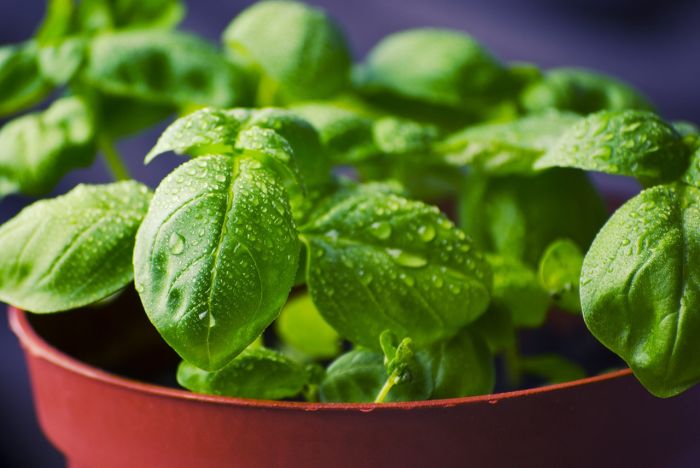
Basil is typically a pretty small plant, but, with proper care, dog owners with a green thumb should be able to get basil plants to reach shrub-like size. You can choose from a variety of different basil cultivars.
Some taste different than the traditional form, while others exhibit attractive colors. At least one form produces rich, purple leaves.
Basil is a great option for dog owners, as it is not only an attractive plant, but it’s also completely harmless. For that matter, it’s nice to have a ready source of basil to use in your kitchen.
8. Banana
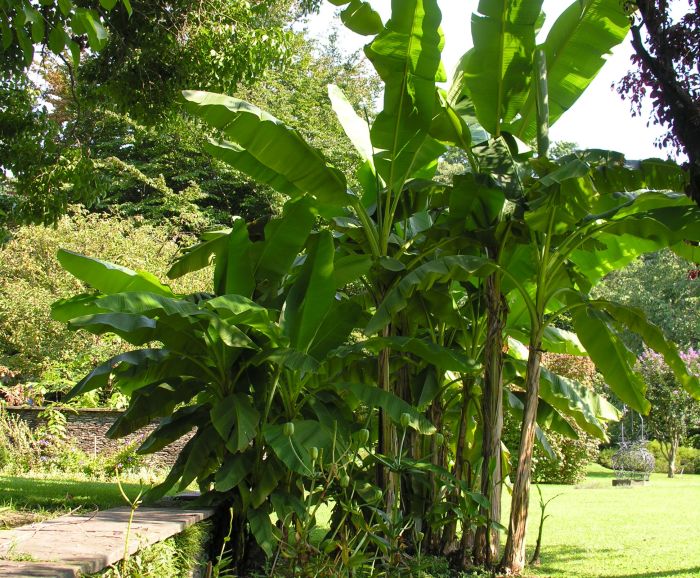
Banana plants are hardy tropical shrubs that many people think of as trees. However, they don’t actually produce any woody tissue, and their “trunks” are comprised of leaf stalks, so they don’t fit the biological definition of a tree.
Regardless of what you call them, they certainly get pretty big, so they’re not ideal for all growing situations.
Nevertheless, they’re safe for your dog and they’re robust enough to withstand your dog trampling around them on a daily basis, so they deserve serious consideration. They could potentially even be used to keep your dog in your yard without a fence, although this would require quite a few banana plants to be practical!
9. Oregon Grape
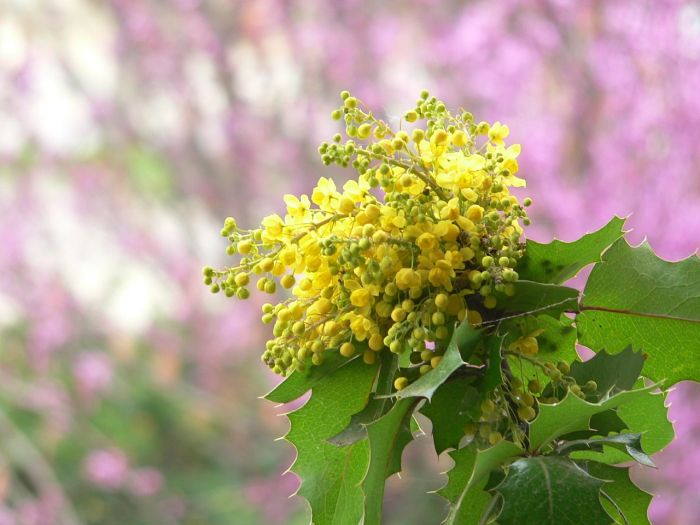
Oregon grape is an interesting-looking dog-friendly plant that is native to the Pacific Northwest.
It often looks like a small, multi-trunked tree rather than a shrub, but it rarely exceeds 6 feet in height, so it’ll work in most situations that call for a shrub. This plant does have moderately spiny leaflets, but they will typically grow above “dog height,” so they shouldn’t pose a danger to most dogs.
Oregon grape produces dark blue to purple fruit (the ones in the photo above aren’t ripe yet). These fruits are edible (some people make them into jams), but they aren’t grapes in any way, shape, or form.
10. Golden Bells
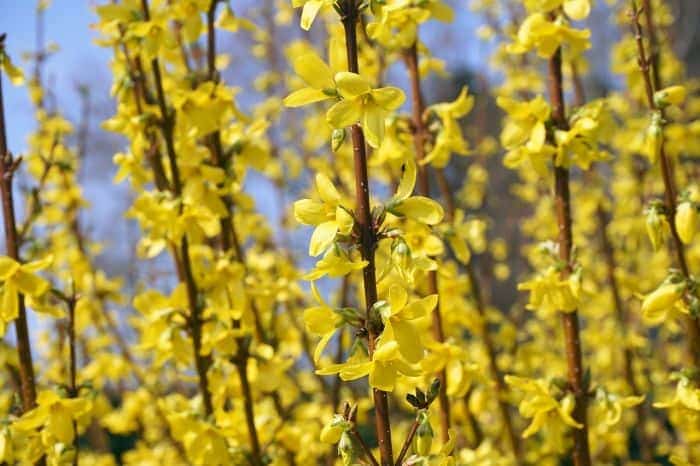
Also referred to by its genus name Forsythia, golden bells are striking shrubs which instantly draw the eye. Some gardeners plant them as ornamentals, designed to inject a splash of color in an otherwise green landscape, while others plant them as hedges.
Just note that golden bells are deciduous plants, so they’ll shed most of their leaves each winter. This may or may not influence your decision to use them as a hedge. But no matter how you decide to arrange golden bells in your yard, they shouldn’t cause your dog any health problems.
11. Boston Fern
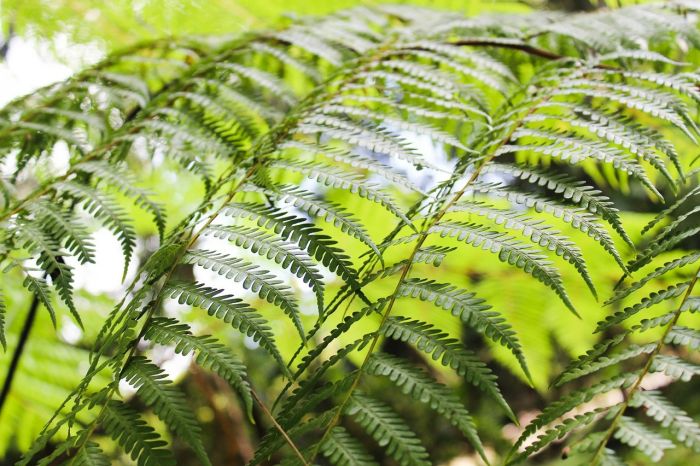
The Boston fern (Nephrolepis exaltata) goes by many names, including feather palm and sword fern, among others.
A hardy and dense fern, this plant prefers relatively damp locations, and it frequently grows in swamps in its native lands. This means that it won’t thrive in arid places, but it is a great choice for those living in the humid Southeast.
Boston fern is a great choice for petite spaces, as it is smaller than many of the other shrubs listed above. It can reach about 3 feet in height, but most specimens remain smaller than this.
Doggie Danger: A Few Common Shrubs to Avoid
The 11 shrubs listed above should serve as a good starting point, but there are countless others that are also safe to use around dogs. Obviously, we can’t list them all.
So, if a plant that doesn’t appear on the list above catches your eye, be sure to do your homework and make sure that it is safe to use around dogs before planting it in your yard. Your vet is a great resource for these types of questions, but you can also check out the ASPCA’s list of toxic plants.
Keep in mind that there are a number of common shrubs and plants that are very dangerous to dogs and should be avoided whenever possible.
We’ve listed a few of the most notable ones below.
- Boxwood
- Rhododendron
- Azalea
- Philodendron
- Sago Palm
- Aloe
- Buckeye
- Cherry
- Foxglove
- Peace Lily
- Peony
- Periwinkle
- Arrowhead Vine
- Nandina
- Taro
- Dracaena
Alternative Dog-Friendly Back Yard Landscaping Ideas
Even though there are plenty of dog-friendly shrubs you can incorporate in your yard, some homeowners may still struggle to find a lot of good options.
For example, homeowners living in the arid Southwest will often have to avoid most of the plants listed above in favor of drought-tolerant plants and succulents. This can be tricky, as many succulents are either toxic or adorned with dangerous spines or thorns.
Similarly, those living in the far northern reaches of the U.S. or Canada will find only a limited number of non-toxic species that can thrive in such cool climates. Those living in the Pacific Northwest may find their options limited by the amount of rainfall they receive.
But don’t despair: You don’t have to plant shrubs in your backyard. Instead, you could embrace one of the alternative landscaping concepts below.
These ideas may not completely eliminate the need for shrubs, but they should at least reduce the number necessary to keep your property from looking barren.
1. Use Statues and Other Decorations
I’m a certified tree-hugger, so you don’t need to sell me on the idea of adding plants to your yard. As far as I’m concerned, the greener a yard is, the better.
Nevertheless, the primary reason we install shrubs and plants in our yard is to take up space. Shrubs and flowers help break up the monotony of a property largely dominated by a lawn, and they add color and visual interest.
But plants aren’t the only thing that can accomplish this goal. You can use statues and other types of lawn ornaments instead of shrubs in many cases.
Don’t worry: This doesn’t mean you need to go fill your lawn with a bunch of gaudy plastic flamingos (unless you’re into that kind of thing). There are a variety of tasteful and attractive decorations available.
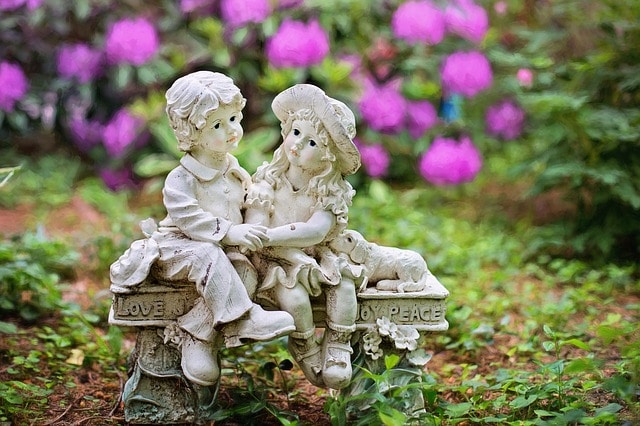
Wind twirlers are often interesting and relatively subtle, although others may prefer more traditional-looking statues. Other decorations will even let you show off your sense of humor.
2. Incorporate Artificial Plants and Greenery
Don’t freak out on me – I know that this is a borderline blasphemous notion in some circles. But the truth is, artificial plants can be helpful if tastefully incorporated, and they have several things going for them.
For starters, artificial plants aren’t toxic to dogs. You certainly don’t want your dog to eat a bunch of plastic or silk leaves, as this could lead to an obstruction due to plastic ingestion, but few dogs would be inclined to do so.
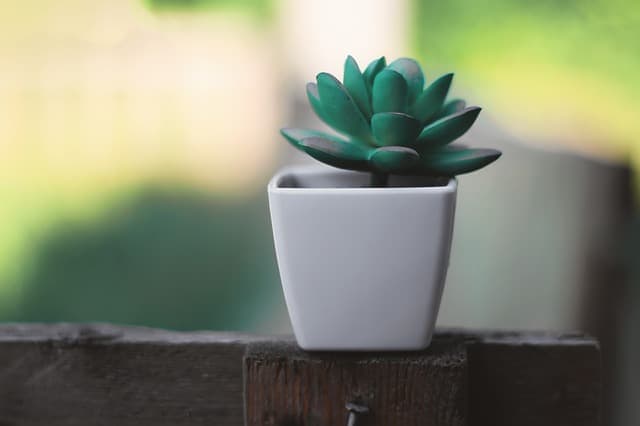
Additionally, plastic plants won’t die – you can “plant” them anywhere you like, and you won’t have to water, fertilize, or prune them.
For that matter, your dog can pee on them every day and it won’t matter. They’re probably your best bet for dog urine resistant plants!
You probably don’t want to fill your backyard or garden with artificial plants. Instead, select a few suitable dog-friendly shrubs that’ll thrive in your area, and then fill in some of the gaps with artificial varieties.
There are plenty of options available, including artificial hedges, accent plants, and even fake grass.
3. Use Fencing
If you have your heart set on real plants, you can always surround them with yard fencing or some other type of border to keep your dog away from them. This effectively allows you to use any type of plants you like, provided that the fencing is secure.
You could even use dog-safe vines or similar climbing plants (thornless roses are a great option) to help conceal the fence and dress up the entire area.
If you’re trying to keep your dog out of the garden, you could use a combination of thick shrubbery and fencing to keep your pup at bay!
You’ll have to tailor the fence to suit your dog’s personality. A simple picket fence will dissuade some dogs simply enough, but others may not be so easy to discourage.
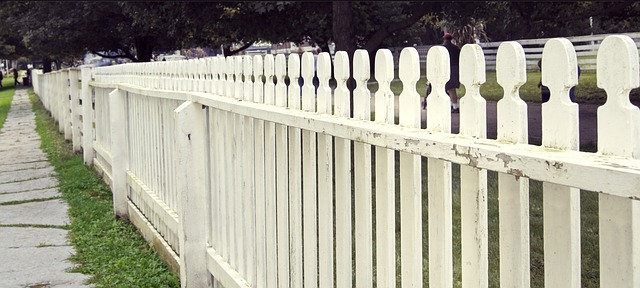
In such cases, you may need to bury the fence a foot or two into the ground to prevent your dog from tunneling beneath the fence. You may also need to make the fence tall enough to prevent your dog from jumping over it.
We talk about dog-proof fencing in detail here, covering various fence options for containing your canine!
4. Surround Problematic Plants with Safe Ones
If your dog isn’t especially interested in mischief, you may be able to surround problematic plants with ones that are safe and capable of withstanding the indignities your pup dishes out.
For example, you may want to plant a peach tree in your yard. But, because the shed leaves and some other parts of peach trees contain cyanide, you need to keep your dog away from the tree.
You could surround the tree with a fence to keep your dog away, but you may be able to accomplish the same thing by planting a hedge of hawthorns around the tree.
Obviously, a hedge or plant-based border won’t be as secure as an actual fence, but it may provide enough discouragement to keep some dogs safe.
5. Consider Dog-Friendly Flowers
Most common shrubs produce flowers, so the distinction between “flowers” and “shrubs” is somewhat nebulous. However, shrubs are generally perennials, while many flowers are annuals that need to be re-planted each year.
Additionally, shrubs are usually valued as much for their greenery as they are their colorful flowers, but exceptions abound.
Nevertheless, homeowners keen to add more dog-friendly plants to their property often need as many options at their disposal as possible. So, you should at least consider the possibility of using plants that often go under the “flower” moniker.
We’ve written about dog-safe flowers before, so be sure to check out our article on the subject if you need some more dog-friendly plant options.
Best Ground Cover for Dog Yards: Canine-Proof Backyards!
Shrubs aren’t the only type of plant most people will need for their yard – you’ll also need some type of ground cover. Grass is the typical go-to solution in such cases, but it isn’t the only option.
We’ve written about the best dog-friendly grass available before, so be sure to check out that article for the full scoop on the best grass picks for homes with pets.
On top of opting for pet-friendly grass, owners on the search for ground cover for yards with dogs might also consider:
- Artificial Turf. You can also use artificial turf, which offers the same benefits artificial plants do.
- Clover. Clover is also a good option. There are several different types of clover you can use, but you’ll have to research the potential toxicity of your chosen variety before you decide to install it. Most clovers are safe, but some contain oxalates that can cause illness if eaten in excess.
- Mulch or Gravel. You can also forego living ground covers in favor of mulches or gravel. Cypress mulch or pine bark are both pet-friendly mulches that are safe to use around dogs, but avoid cocoa mulch, as it is toxic to dogs if eaten. Gravel is obviously not toxic, but it can cause serious health problems if swallowed, so try to select the biggest gravel available to discourage your dog from eating it.
The Pee Pee Problem: Protecting Your Plants from Dog Urine
A lot of homeowners are eager to install plants that are resistant to dog urine. Unfortunately, this just isn’t very practical.
Most plants are susceptible to dog urine, although grasses typically suffer more acute stress than shrubs do.
A lot of people suspect that it is the low pH value of dog urine that causes problems for grasses and other plants, but that’s not entirely accurate.
The low pH value (acidity) of dog urine is certainly not ideal for some plants (particularly those that grow best in alkaline soils), but it isn’t the primary issue.
Instead, it is the nitrogenous waste products in a dog’s urine – namely, urea – that cause plants to brown, wilt, and die when showered repeatedly.
Nitrogen is an important resource for plants, and it is one of the primary constituents of fertilizer. However, excess amounts of nitrogen can be detrimental to the health of plants.
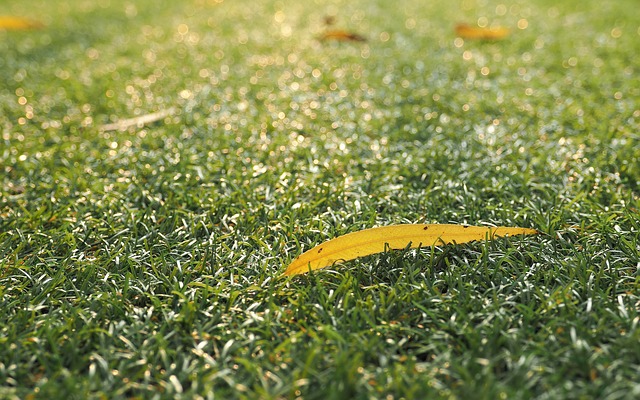
Unfortunately, there aren’t a ton of great options for dog urine resistant plants or mitigating the effects of dog urine – some owners spent hours fixing their dog’s urine burns on their lawn. But you can try to implement the following solutions, which may help your plants cope more effectively:
- Keep your dog well-hydrated. The volume of urine your dog produces isn’t the real problem – it is the degree to which the urine is concentrated that causes plants to suffer. In fact, dilute urine often acts as a fertilizer, rather than a threat. So, do all that you can to encourage your dog to drink plenty of water.
- Train your dog to pee in designated spots. You may not want your dog to pee in the middle of your front yard or near your prized shrubs, but there are undoubtedly inconspicuous places in your yard where urine won’t really cause a problem. Try to train your dog to pee in specific areas, and you can likely limit the problems that occur.
- Use as little fertilizer as possible. Some plants will need to be fertilized regularly to remain healthy, vibrant, and attractive. But try to use as little fertilizer as possible and avoid using it entirely on plants that don’t require it. This will help your plants cope with the occasional burst of nitrogen your dog sprays in the area.
- Take your dog on frequent walks. Why ruin your own lawn when your neighbor’s yard is right there? I’m kidding – doing so would hardly be neighborly, and it could lead to the kind of strife that often precedes an appearance on a daytime courtroom reality show. But, if you have a nearby dog park or forested area you can visit, it’ll help protect the plants and grass growing on your property.
***
Dogs can present challenges for those inclined to decorate their yard with plants and shrubs, but with a bit of homework and preparation, you can sidestep most of these problems.
Just be sure that you stick to non-toxic shrubs (especially if your dog is fond of chewing on plants) that are hardy enough to withstand the wear and tear your dog will inflict.
Have you found any shrubs that worked especially well with your dog? We’d love to hear about them!
Be sure to tell us the shrubs you’ve used, as well as your general location (or hardiness zone), so that other owners can determine if your solution will work for their needs.
Also, for more dog-friendly gardening tips, make sure to read our guide to pet-safe weed killers too!
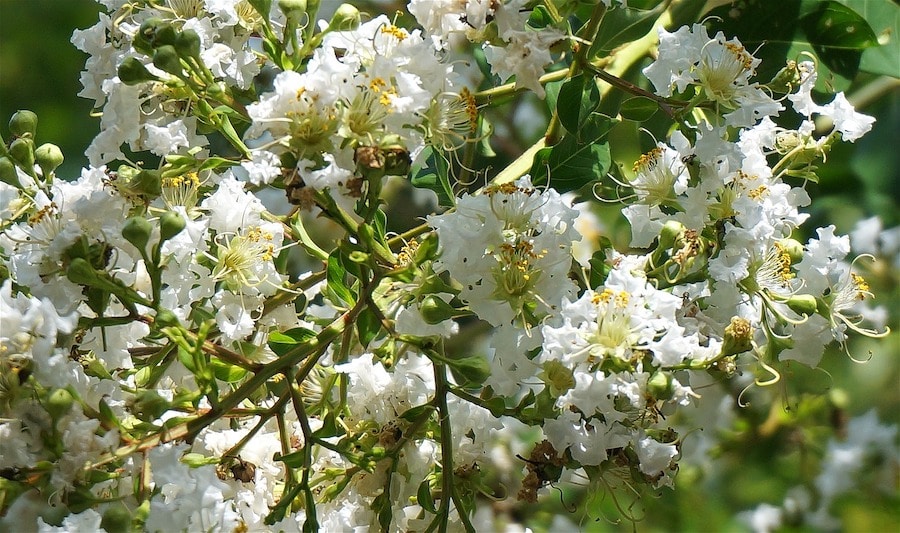

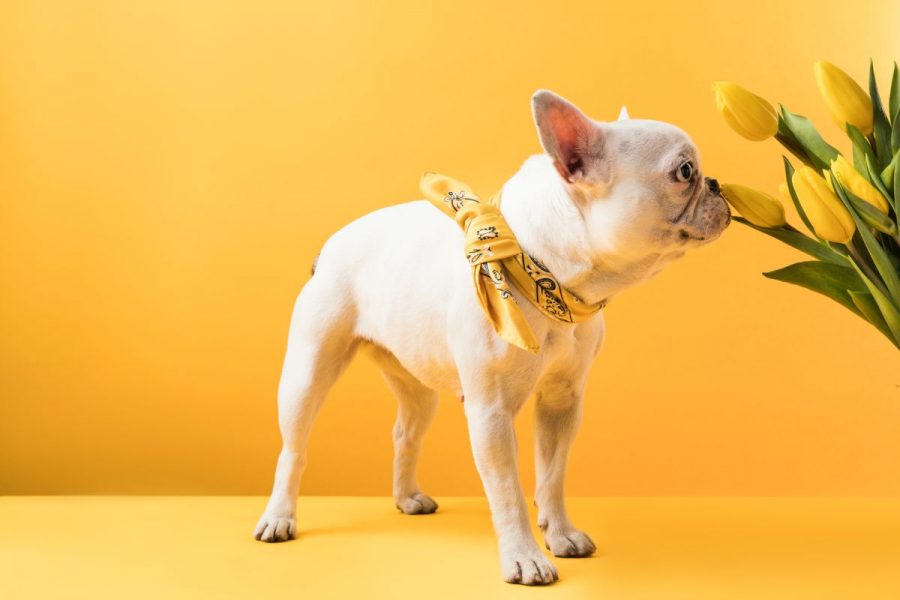


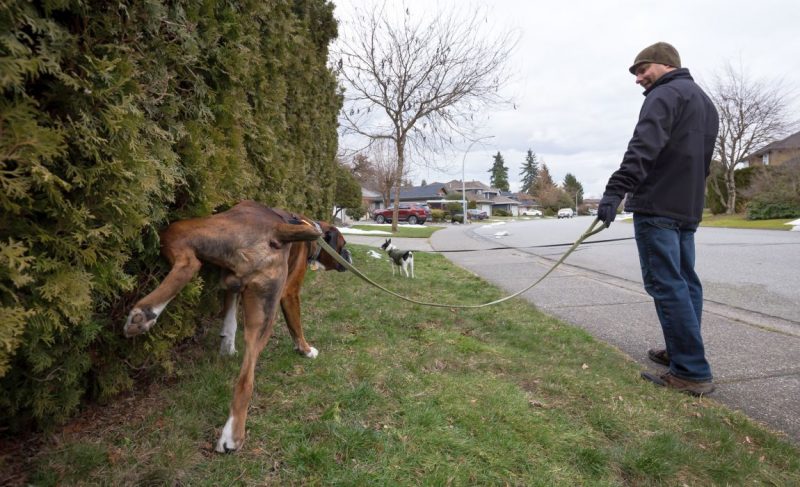
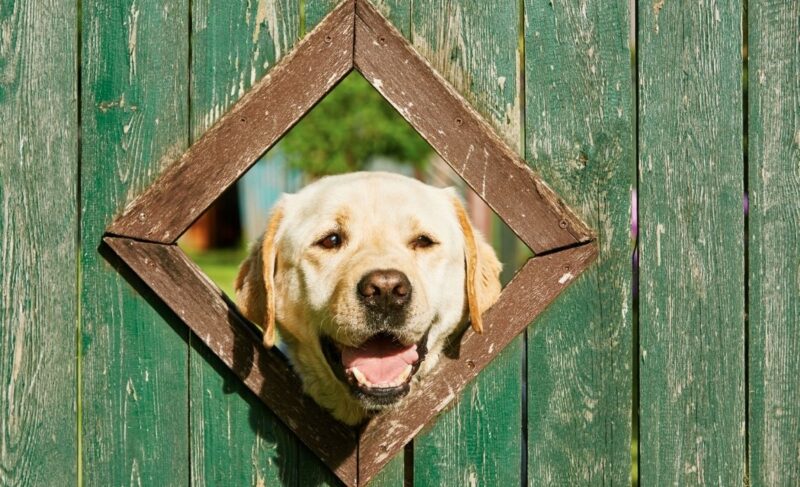
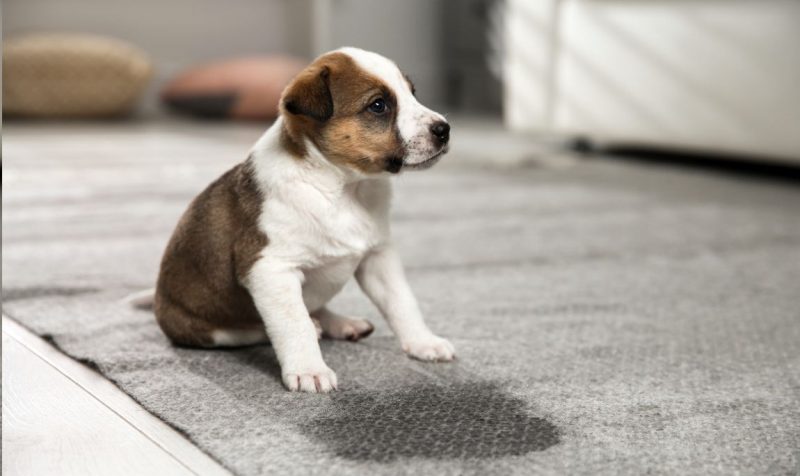
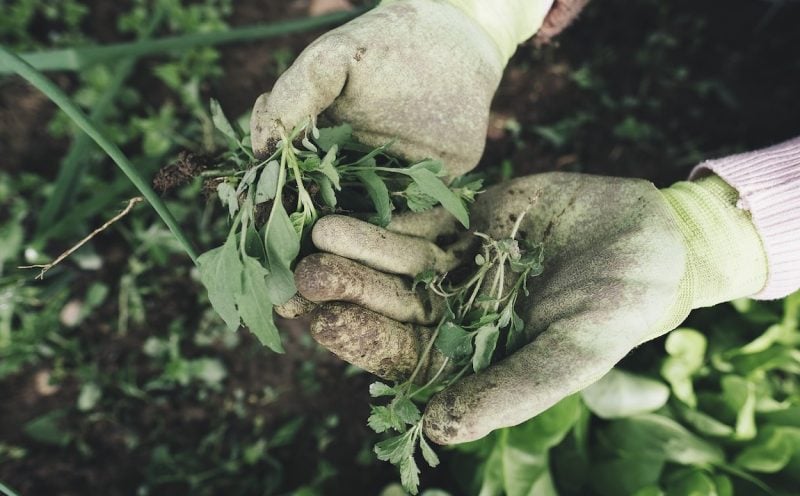
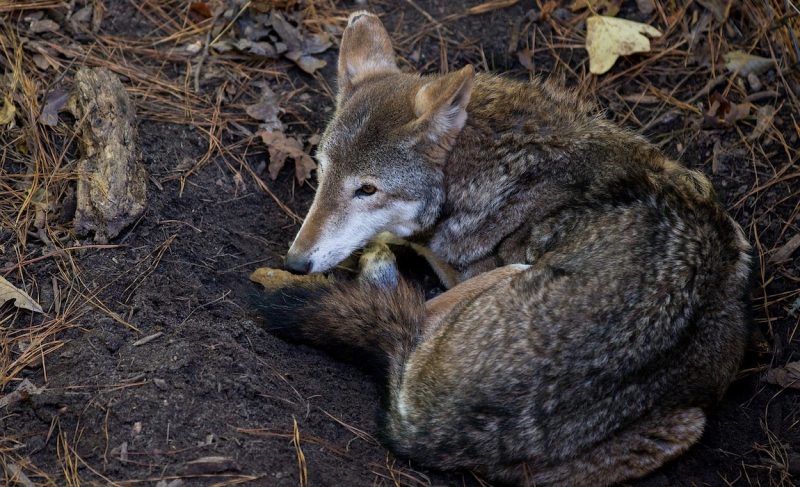
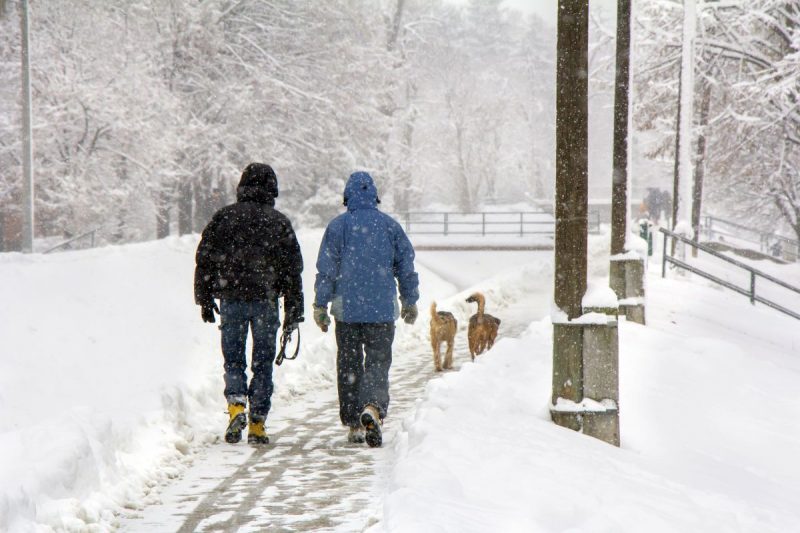
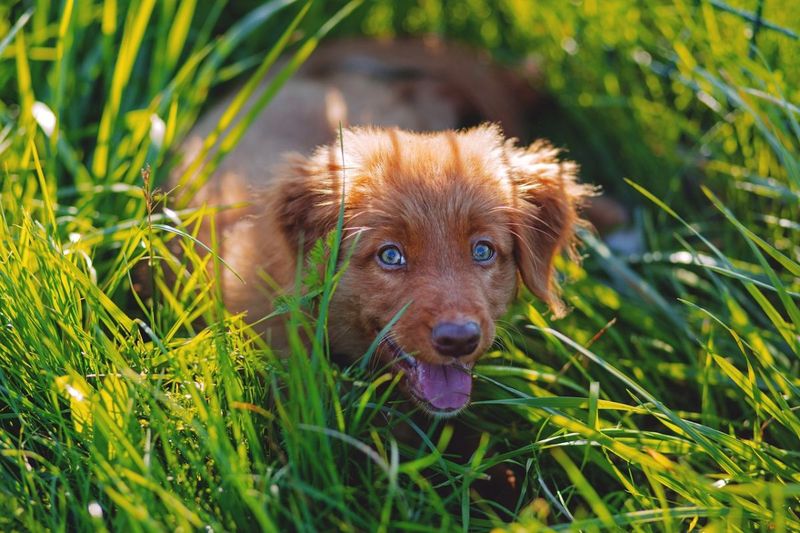
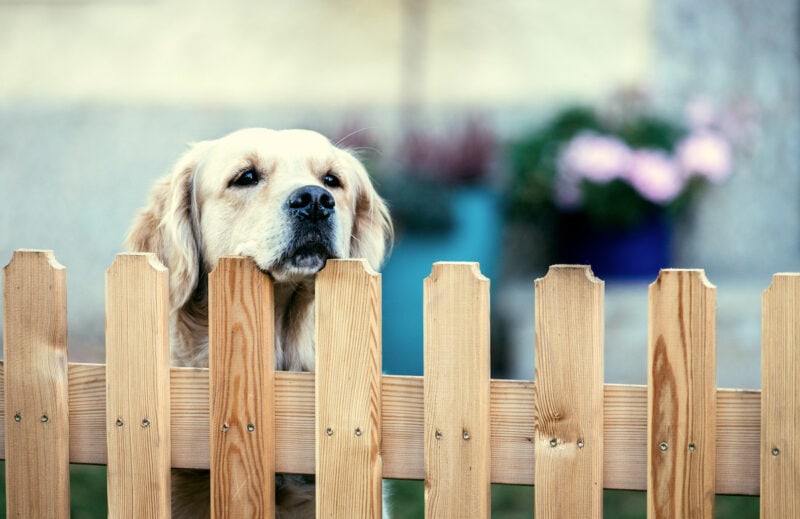

Leave a Comment